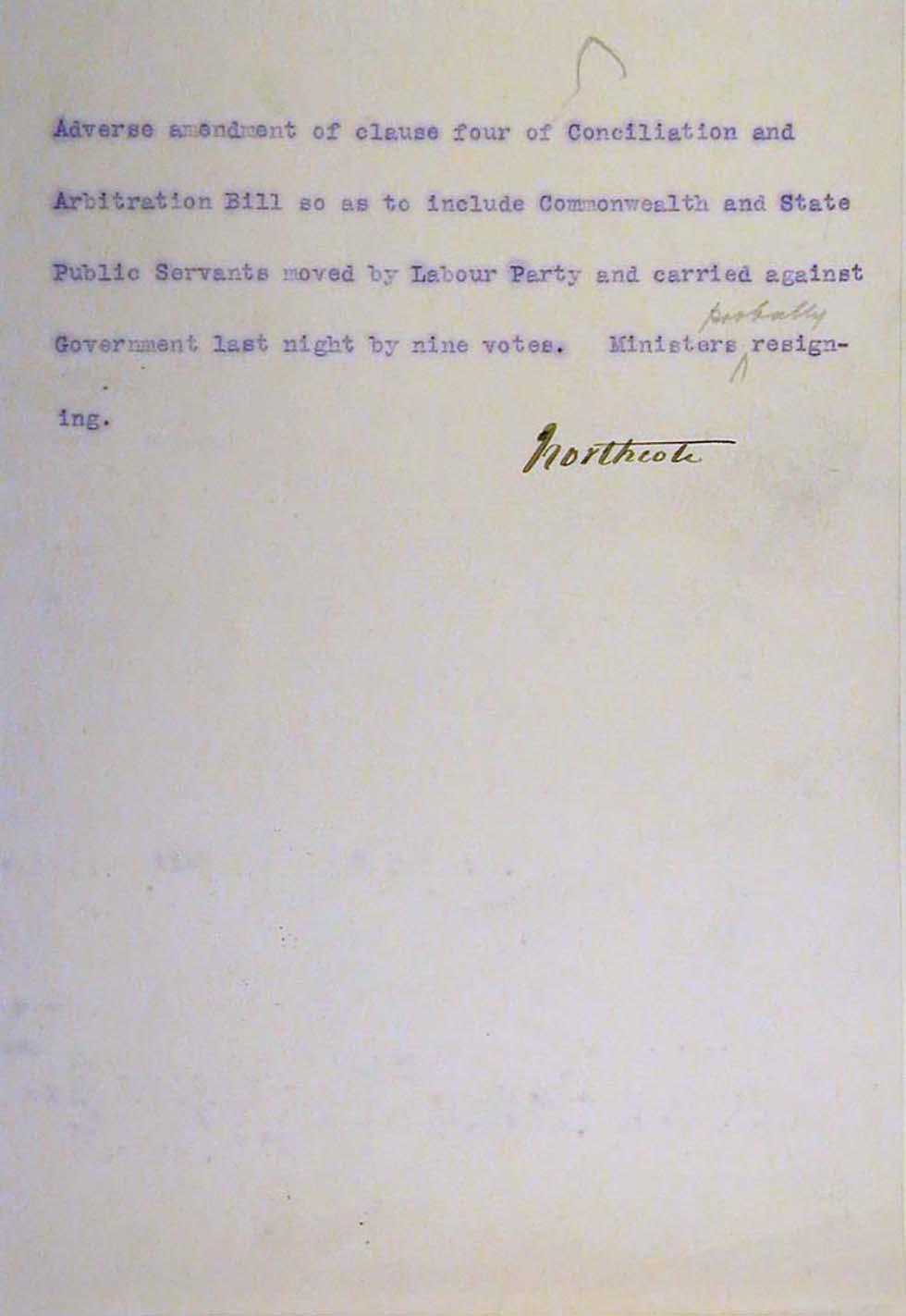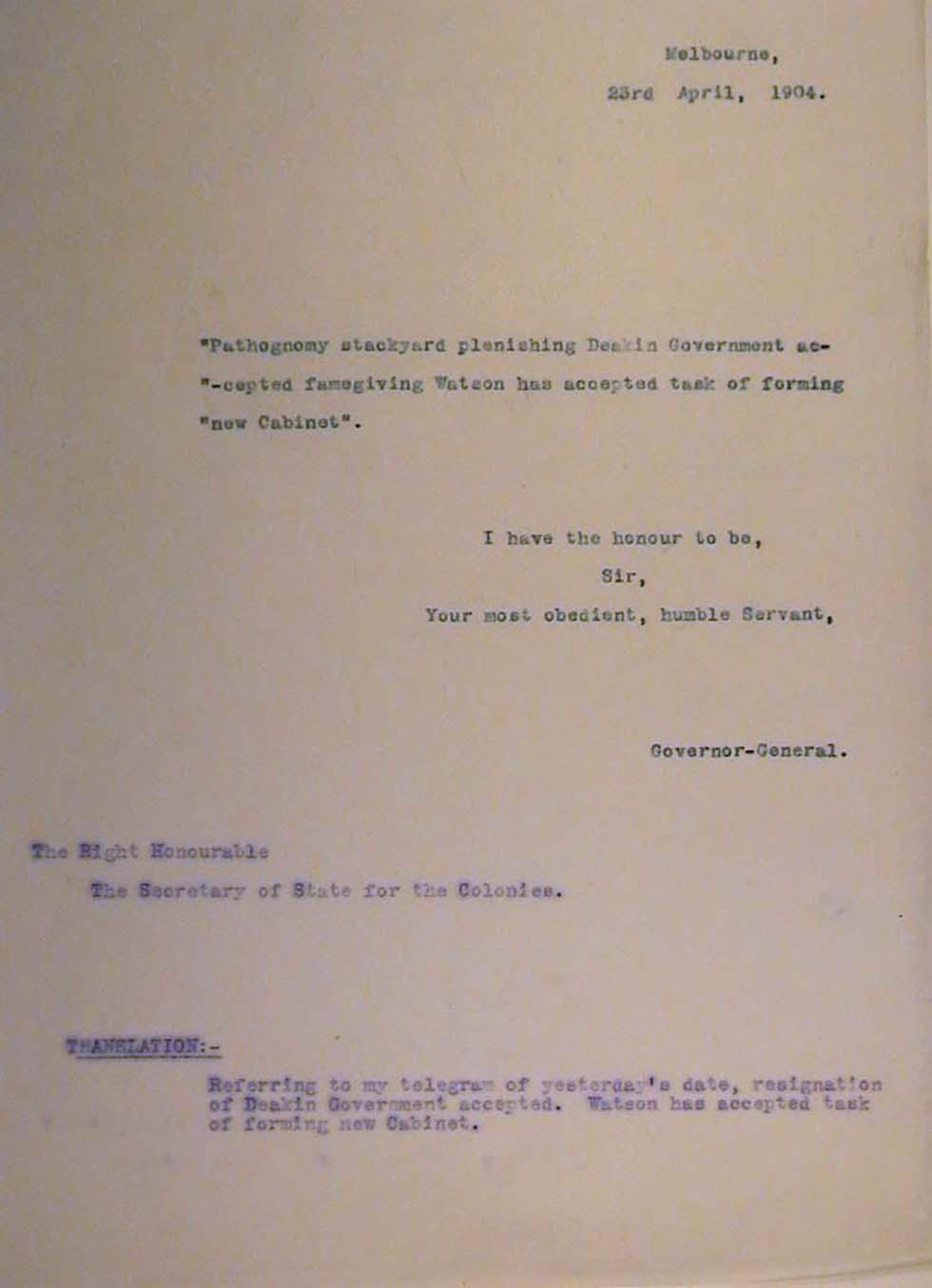

Aboriginal and Torres Strait Islander people should be aware that the National Archives' website and collection contain the names, images and voices of people who have died.
Some records include terms and views that are not appropriate today. They reflect the period in which they were created and are not the views of the National Archives.



[Page 1.]
Adverse amendment of clause four of Conciliation and Arbitration Bill so as to include Commonwealth and State Public Servants moved by Labour Party and carried against Government last night by nine votes. Ministers [handwritten word inserted 'probably'] resigning.
[Handwritten signature:] Northcote
[Page 2.]
Melbourne,
23rd April, 1904.
"Pathognomy stackyard plenishing Deakin Government accepted famegiving Watson has accepted task of forming new Cabinet".
I have the honour to be,
Sir,
Your most obedient, humble Servant,
Governor-General.
[Typed in differed ink:] The Right Honourable
The Secretary of State for the Colonies.
[Underlined heading:] TRANSLATION: -
Referring to my telegram of yesterday's date, resignation of Deakin Government accepted. Watson has accepted task of forming new Cabinet.
These two cablegrams form part of correspondence from the governor-general's office reporting the fall of the Deakin government to the British secretary of state for the colonies on 22 and 23 April 1904. The first cablegram refers to an amendment and is signed by Governor-General Lord Northcote. The second document begins with a coded message which was transmitted via cablegram. A translation of the coded message appears at the foot of the page.
Learning resource text © Education Services Australia Limited and the National Archives of Australia 2010.
Learn how to interpret primary sources, use our collection and more.